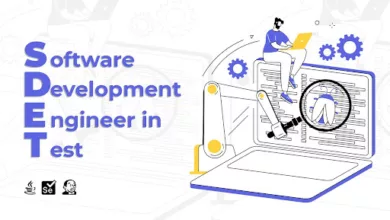SVG Optimization Techniques By Speeding Up Web Page Loading
In the digital world, the speed of a website can improve the user experience and it gives the opportunity to the developers to enhance the web speed to increase the performance. Vector graphics is the one option that can increase the speed of any website. It offers many advantages that can directly impact the loading time if it is not directly optimised.
That is the reason this format is known and is popular day by day for its flexibility in rendering graphics. In this essay, we will shed light on some factors by which the web speed can be enhanced and the function of SVG converters with their optimization techniques. Join us on a journey to make your web experiences faster, smoother, and more responsive, all while harnessing the power of SVGs.
A Quick Look at the Concept of SVGs:
SVG is known as scalable vector graphics. It means the graphic sketches that are able to scalable. For this purpose, SVG converter takes their services to decrease the work of developers. By using the production of theonlineconverter you can elevate the quality of your marketing materials and your brand’s reputation. The charts, graphics, and any type of illustration for a website can be designed with this help. It determines these vector files without losing their format. It is a unique method that does not rely on pixels to make pictures that you want to see instead uses vector data.
Why Scalable Vector Graphics Matters
Scalable Vector Graphics has too much importance to indications of images and also plays a role in the web speed. It matters because it’s a versatile and lightweight format for web graphics. It discovers the sharp visuals that scale to screen size without losing their format and is also responsible for the web design.
Use their free online SVG converter in order to reduce the load time to enhance the best user experience. The most advanced and best feature of this converter is that it empowers developers and designers to deliver efficient graphics for advanced web speed and design.
Benefits and Applications of Scalable Vector Graphics
In the digital world, there are many uses of scalable vector graphics. It reduces the work of developers and designers to enhance the efficiency of images for upload on the website. In the following section, we look at their various advantages and applications in different fields. So be focused and look at these.
- SVGs are resolution-independent, meaning they maintain high-quality visuals regardless of screen size or zoom level. This makes them ideal for responsive web design and ensures graphics look sharp on any device.
- These files are typically smaller in size compared to raster formats like JPEG or PNG. This results in faster loading times for web pages, saving bandwidth and improving user experience.
- These are XML-based, which means they can be easily edited using text editors or vector graphics software. This makes them highly adaptable for creating custom designs.
- These can be scaled up or down without loss of quality. This feature is particularly useful in creating icons, logos, and illustrations for various screen sizes and resolutions.
- It is accessible by nature, making it a preferred choice for creating graphics that need to meet accessibility standards and guidelines.
- Search engines can index the content within SVGs, improving the search engine optimization (SEO) of web pages that include SVG graphics.
Frequently Asked Questions (FAQs):
How SVG Optimization Can Improve Website Performance
Q2: Why is SVG optimization important for websites?
SVG files are commonly used for scalable graphics on websites, but large file sizes can slow down page loading. Optimization reduces file sizes, leading to faster load times, improved user experience, and better search engine rankings.
Q3: How does SVG optimization benefit website performance?
Optimized SVGs result in smaller file sizes, reducing bandwidth usage and improving loading speeds. This is crucial for mobile users and those with slower internet connections, contributing to a more inclusive and accessible web experience.
Q4: What techniques are used for SVG optimization?
Techniques include minification (removing unnecessary code), compression (reducing whitespace), and simplification (streamlining complex paths). Additionally, tools like SVGO and online services can automate the optimization process.
Q5: How Can SVGs Be Optimized?
Minification: Remove unnecessary whitespace, comments, and metadata from the SVG code.
Compression: Use tools to compress the SVG file, such as SVGO or online compressors.
Simplify Paths: Simplify complex paths to reduce the number of nodes.
Remove Unnecessary Elements: Eliminate unnecessary groups, shapes, or attributes.
Q6. Does SVG Optimization Affect Image Quality?
When done correctly, SVG optimization should not significantly impact image quality. The goal is to remove unnecessary data that doesn't contribute to the visual appearance.
Q7: Can SVGs Be Animated After Optimization?
Yes, SVGs can still be animated after optimization. Optimizing SVGs primarily focuses on reducing file size and doesn't interfere with the ability to apply animations using CSS or JavaScript.
Q8: How Does SVG Optimization Contribute to SEO?
Faster Page Speed: Search engines consider page speed as a ranking factor, and optimized SVGs contribute to faster loading times.
Mobile Friendliness: Optimized SVGs are beneficial for mobile users, improving the mobile-friendliness of a website.
Q9: Are There Any Risks in SVG Optimization?
While optimization generally improves performance, care should be taken not to over-optimize and compromise image quality. Always test optimized SVGs to ensure they meet visual requirements.
Read more about How Windows OS Shapes the Canadian Software Market





